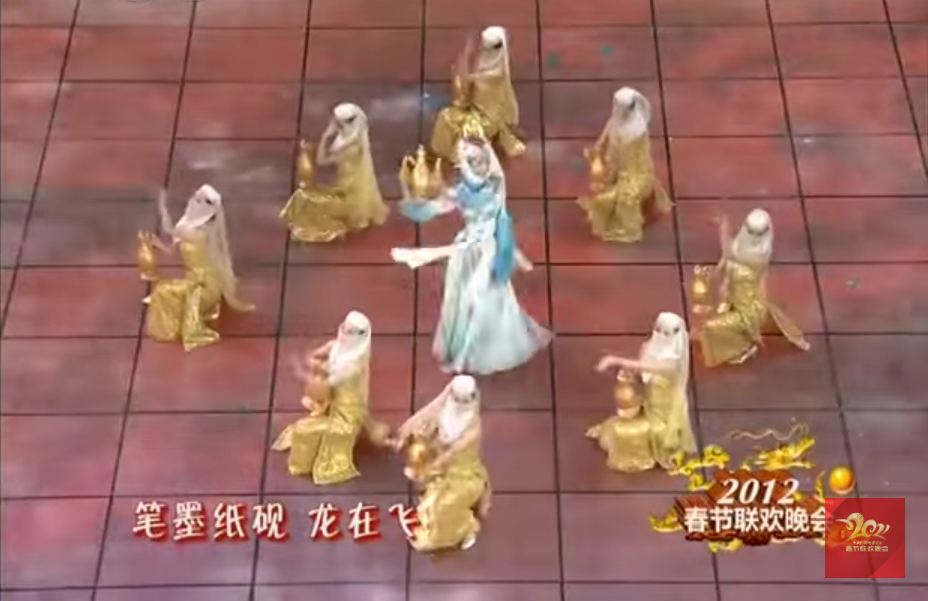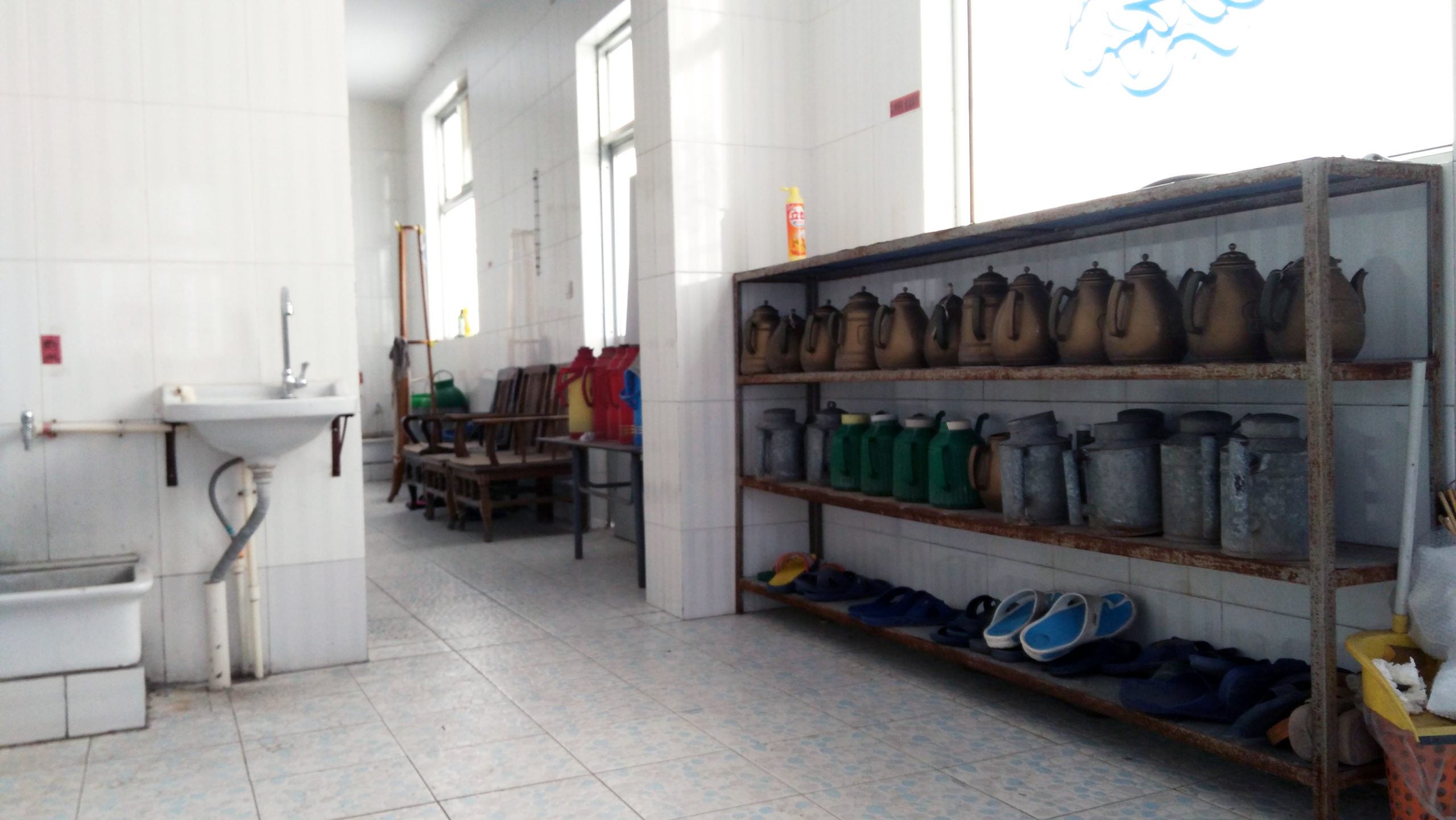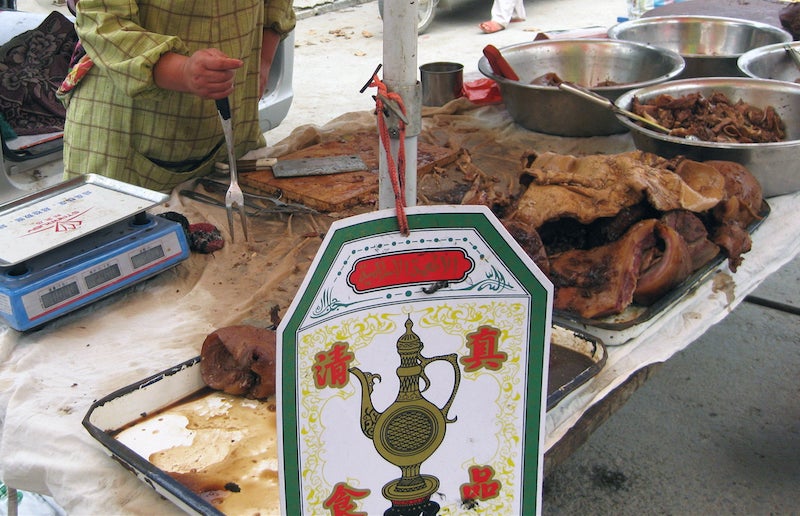Representing ethnic identity through material culture — The Hui people and their ‘tang ping’ pitcher
Material culture always forms a source of group ‘identity’, or rather, ways of identification. It can also be easily appropriated by others to perform a stereotypical image of the group in question, just as what we will observe in the case of the ‘tang ping’ pitcher and the Hui, an ethnic minority in China.
The Hui are officially 'recognised’ by the Chinese government as a minority with their default religion, Islam. This blog post features state, ethnic and local levels of Hui-identity/expression/representation related to the form of material culture, namely tang ping pitchers. The main argument of this post is that the same form of material culture, if applied or appropriated by different groups in different contexts, can express different group identities related to the same imagined community.
In this post, I talk about ‘identity’ as a process of self-expression or representation, rather than a fixed tag attached to a group of people.
Before delving into the case of the Hui, I would like to briefly introduce China’s ethnic classification and its impacts on identity politics. Speaking in an over-simplified way, combining the Stalinist definition of nation (common territory, common language, common economic mode of production and common culture) and Chinese scholars’ adjustments such as linguistic categorisation, the PRC government officially recognises 56 ethnic groups, including the majority Han ethnic group, and 55 ethnic minorities that are considered as having specific traits distinguishing them from the un-marked Han people.
However, as many scholars have pointed out, despite the enormous efforts put into the work of classification, the idea of belonging to an ethnic group and thus sharing one ‘identity’ is arbitrarily imposed by the state upon individuals who actually entertain diverse cultures.
One indicator is the Chinese ID card: every individual’s ID bears the information of her/his ethnicity. This post, to reiterate, aims to question this classification on a micro-level, and offer a case in which Hui ethnicity is constructed, deconstructed and/or re-constructed.
State performance of the Hui and their pitcher
On January 22, 2012, the annual Chinese Spring Festival Gala was broadcast on television. This gala is the peak of state-censored cultural exhibition in contemporary China, despite its shrinking audience.
Showcasing ethnic diversity has been a 'tradition’ in this annual cultural exhibition since its first television broadcast in 1983. The Spring Festival is such a harmonious and enjoyable event that all Chinese, including minority people, celebrate it. One can always find at least one show featuring ethnic singing and dancing in every year’s Spring Festival Gala.
In 2012, this was a dance show, Beauty in the Chinese Style, featuring various ethnic minorities living in China. At around 1’47’’ into the show, a maiden dressed in blue and wearing a headscarf surrounded by a bunch of other headscarfed girls rushed out onto the stage, each carrying a golden pitcher on her head. Their dance lasted for about 12’’ and was abruptly interrupted by a group of Tibetan-looking boys swinging their long sleeves.

If one is familiar with China’s ethnic groups, an educated guess could be made that the girls with pitchers on their head represent the Hui, judging from the headscarfs and the pitcher: a water vessel with a long neck and a large belly, apparently depicting the Hui’s ‘tang ping’.

However, this depiction is problematic. On the one hand, unlike the imagined close-to-nature ‘Rebeccas at the well’, the Hui never embraced the habit of carrying anything on their heads. Nor does every Hui woman wear a headscarf. The Hui is actually a group of people dispersed in communities all over China, their lifestyles varying from region to region, and from family to family.
The pitcher, on the other hand, is not for carrying around. It is normally used inside a mosque or household to hold water for performing religious ablutions before prayers.

Admittedly however, the use of the tang ping pitcher to represent the Hui is not an idea conjured up from thin air. The pitcher does play a role in many Hui people’s quotidian life. The next section describes a daily encounter with the tang ping pitcher.
Pitcher, Hui and foodways
Although the Hui are, as stated above, a diverse group, one attribute unites most of them: abstinence from pork. Pork is however the most important meat dish consumed in China, so spotting a halal restaurant/stall when dining out becomes a problem for many Hui, especially those who live in Han communities. To put it briefly: the Hui needed a sign to separate their food from the Han’s. And the tang ping pitcher serves this purpose.
This blog post can only provide an over-simplified link between the pitcher and Hui foodways here. Halal in Chinese is: ‘qing zhen’, a term literally meaning ‘clean and real’. And as function can give birth to signs, the pitcher’s function of providing water for ablutions/cleanliness is linked to the Chinese name of halal-ness, or ‘clean and real’.
Moreover, per many written and oral resources, real pitchers were originally hung on halal stalls or in halal restaurants as a symbol of Hui foodways, but from a time unknown, people started to use images of pitchers, printed or painted, usually combined with Arabic scripts, to highlight the Hui-ness of the stalls or restaurants in question.
As a result, in some (not all!) regions in China, people—Hui and non-Hui alike—recognise the pitcher sign as indicating halal food. The quotidian relationship between Hui and the pitcher is therefore established, not so Disney-fied as that in the Spring Festival Gala.
If this section states the ‘ethnic’ level of Hui’s self-expression using the pitcher, there is still a subtler and more local level of such performance of ethnicity, which I shall present below.
‘Does it have water in it?’ Vendor-testing in the local
All signs can lie. This common knowledge in semiotics could be troublesome in everyday life. What if one has a picture of the pitcher hanging at the stall but sells non-halal food? Another local level of performance solves this problem, and, as I will discuss later, simultaneously introduces new problems too.
In an interview with an akhond (originally Persian, meaning cleric of a mosque) in my local mosque in Shandong Province, China, he told me a story:
Akhond: Some Hui people love to test people’s knowledge. They deliberately test the vendors sometimes. When they see that a vendor puts out a pitcher, they ask: 'Does it have water or not?’ If the vendor says: 'Yes, it has water’, s/he understands [Islam], but if the vendor says: 'No, it does not,’ then s/he is a fake [Hui/Muslim].
Me: Well then, the pitcher here is a drawing on a board or...?
Akhond: Yes, a drawing on a board. ‘Having water’ (you shui) here has another meaning: we Hui Muslims express the idea of having finished the ablutions before prayer by saying ‘having water [on the body]’, and one who has not yet performed ablutions before prayer says s/he ‘does not have water’. Thus, to ask whether the pitcher has water in it is to ask whether the food is clean.
Me: There are two meanings?
Akhond: It is double-entendre.
Me: Yes, a double-entendre. (end)

From the story, one becomes aware that some Hui people would test whether food vendors were really Hui/Muslims by using a jargon to ask if the pitcher-picture put up as a sign ‘has water’. A Hui vendor would be aware of the implicit meanings in the question. But a non-Hui vendor would be confused, because how could a pitcher-picture have water in it?! This is what I call a local level of performance of the pitcher-Hui relationship.
The problem of lying signs still persists, however. Because words are signs too. What if a vendor is not selling halal food, but is armed by all Hui jargons? Similarly, failure in performing the jargon cannot be seen as a disclosure of the vendor’s non-Hui/Muslim identity. Because this jargon is more vernacular knowledge than commonly shared religious knowledge about Islam. A Hui vendor from other regions of China may be quite religious but may have never heard of this jargon.
Therefore, the jargon can test local-ness more than Hui-ness. Of course, without proper knowledge, even a local Hui could fail the ‘test’.
Conclusion
In this post, I talked about the performance of pitcher-Hui relationship on three levels: state, ethnic and local. And I venture to say that there are more levels that are not discussed here, or even not noticed by me. Each level of performance represents certain ideas, either from outside of Hui communities or from the Hui people, about ‘Hui identity’, if there is such a thing.
The Hui are defined by their pitchers, and use the pitchers to define themselves and others too. As a folklorist, however, I suggest that any presentation of the same folk object can be multi-layered: it can highlight some attributes, but at the same time also deconstruct other aspects of the group ‘identity’. For instance the dance item in Spring Festival Gala intends to depict Hui as a Muslim minority using tang ping pitchers, but also confusingly cut the relationship between pitchers and foodways; the pitcher-sign of halal foodways is convenient for many, but to some extent also serves as a way of separation, etc. Of course, the study of folklore is not about judging or focusing on some signs while ignoring others, but to make all the performances dialogue.
This post is derived from: Zhao, Yuanhao. 2018. Performing differences: Pitcherdom and ‘water’-testing the vendors. Asian Ethnology, pp. 235-256.
The views expressed in this forum are those of the individual authors and do not represent the views of the Asia Research Institute, National University of Singapore, or the institutions to which the authors are attached.
...despite the enormous efforts put into the work of classification, the idea of belonging to an ethnic group and thus sharing one ‘identity’ is arbitrarily imposed by the state upon individuals who actually entertain diverse cultures.






